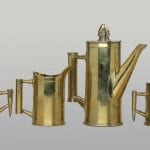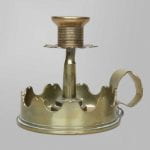Hello, and welcome back to my blog. Today I will be telling you about my learning in our most recent project, The Great War Exhibit. This project was focused around an artifact that we chose at the start of the project. I chose trench art, for the simple reason of not knowing what’s it was at the time. Little did i know, it was pretty amazing.
Trench art was and still is important. Trench art is made, and has been made in wars all over the world. This includes the Korean War, the Vietnam War, and both World Wars (and hopefully not a third one). Trench art is important because of what it represents, and what it does for the people that make it. First of all, trench warfare was brutal (you can play a game to learn more here). There was no clean water (you would have had to boil it to make it drinkable), no way to clean your lice infested clothing, and a lot of terrifying experiences. The soldiers would spend most of their day waiting for the next attack from the enemy or awaiting new orders. This lead to the soldiers spending large amounts of time in their terrible living conditions, doing basically nothing. Soldiers began to get creative. There were many pastimes in the trenches, and one of the more pronounced ones was trench art. Trench art symbolizes the drive and spirit of the soldiers and what they were so determined to get through.
Trench art came in many forms, and they ranged from boxes with punched in writing on it, to beautiful designs such as the one on the artillery casing seen above.
At the start of the project we also researched a soldier from the Canadian archives. My soldier’s name was Edward McFeely whose information can be found here. We looked through our soldier’s information and crafted a story with as much truth to it as possible. For this we had to figure out where they fought, how and if they died, and many other personal facts. This was a very challenging assignment especially because we had to read so much old cursive. This story was supposed to help Canadians understand the historical significance of our soldier and artifact.
Here is the final product of my story. The video!
This video demonstrates the competencies “establish historical significance” and “using resources” because of the extensive research done into the purpose, meaning, symbolism, and achievements of the soldier and artifact used to create the video. I think that the importance of that ties into the driving question for the project, “How might we use artifacts and film to show the significance of WWI”. I think that the answer to the driving question is the same as the examples of the competencies mentioned earlier. This is because the video itself is the answer to he question. We can use artifacts and film to show the significance of WWI by creating an informative video that shows the experiences soldiers had in the trenches and explaining why they mattered.
The next example I would like to share with you is the mini-museum that we hosted as a class in our school library.
A short version of this event was streamed and recorded on instagram, which can be viewed here on the Seycove Secondary instagram page. This was a big event, where classes from the school would come through our exhibit and learn about each of our artifacts. This gave us a great opportunity to share what we had learned up until that point in the project. The competency “global collaborator” was a big part of this event because of how we had to take the perspective of someone who knew nothing and explain the artifact fro the ground up. During my presentation, I gave a very similar explanation to the one I put at the top of the post.
Overall, I think that his project was a huge success, and helped us better understand WWI and the parts of it that aren’t easily accessible.
I hope that you enjoyed reading through this post about my learning.
Thanks for stopping by!
Keenan





